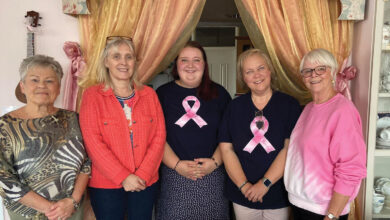Planning ambitions
 Well-known town planning consultant Clyde Shanks looks at how local planning is faring under the control of local councils.
Well-known town planning consultant Clyde Shanks looks at how local planning is faring under the control of local councils.
Our 11 Local Councils are 18 months in to their role as decision-makers on planning matters and having tuned themselves in to their bread and butter planning application and enforcement responsibilities they are now entering another crucial element of their role – bringing forward new Local Development Plans to guide future development of their areas to 2030 and beyond.
When you have a planning system change as fundamentally as ours has done in such a short space of time it was always inevitable that the new system would take some time to bed in.
The focus understandably has been on day to day operations and getting through the volume of planning applications received, enhancing the Members’ understanding of their role and establishing a strong dynamic between them and their planning teams.
Some have achieved that better than others, Mid-Ulster, Antrim and Newtownabbey, Lisburn and Castlereagh warrant a mention as they more than the others have in our experience placed a focus on that one constant that assists in an ever fast paced world – encouraging direct communication and council planners being willing to be at the end of a phone to discuss issues that arise through the processing of proposals.
There is no substitute for responsiveness if we are truly serious about delivering good planning decisions that are in the public interest taking all material planning considerations in to account.
Engaging positively in a two way discussion about the right development in the right place with the decision maker and knowing that there is a willingness and desire to engage positively in return has been a refreshing change in mind-set. It is not one that has been as fully embraced by all across the new councils as we would like but that will come because each council wants to see their area change positively for the better.
We are moving in the right direction. Let’s not forget that we are trying to mould a long established central government planning structure and culture in to a much more accountable and locally delivered function. That presents an enormous challenge.
In terms of the anticipated new Local Development Plans I attended a recent agendaNi conference last week which heard leading local planning barrister Stewart Beattie QC describe the timetable set by central government of adopted Local Development Plans within three and a half years as ‘nothing short of heroically optimistic!’. Certainly in my 17 years of practicing in Northern Ireland the quickest central DoE planners managed it was in a little over twice that length of time. So it is an enormous expectation and challenge that the 11 councils face.
Planning loves the use of acronyms and these will shortly abound around local development plan teams. Conversations will flow naturally to confirm that initial SCI approach has been completed, they are working towards a date for publication of their POP paying due attention to the RDS and its HGIs.
That shouldn’t of course forget the huge task before each of the councils in bringing forward detailed operational policies within the new LDPs to replace the existing suite of PPSs and the SPPS. I did say planning loves an acronym or two.
What is critical is that those landowners and developers with an interest in land must be alive to the importance the content of the new development plans will have in determining future planning applications. They will need to engage and communicate their assessment of how towns and villages should be shaped in promoting their land interests effectively.
The danger in emerging from economic downturn is that there has been a narrowing of focus and a more short-term outlook borne out of survival rather than long term planning to seek to secure and zone land in sustainable locations.
Historically there has been an alliance of the development community in seeking to influence and shape emerging local development plans and with the primacy that our legislation places on the plan that is now as critical now as it has ever been.





